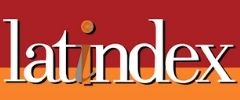Inattention in adolescence: case of ADHD vs juvenile absence seizure
DOI:
https://doi.org/10.25118/2763-9037.2024.v14.1278Keywords:
Attention Deficit Hyperactivity Disorder, Absence Epilepsy, Neurosciences, ADHD, hyperactivityAbstract
Introduction: Attention Deficit Hyperactivity Disorder (ADHD) and juvenile absence seizures are examples of pathologies that are important differential diagnoses of inattention in childhood and adolescence. Objective: In this context, the article aims to reinforce the relevance of differential diagnosis between inattention in adolescents, focusing on ADHD and juvenile absence seizures. Case Report: EVB, female, 11 years, presented with complaints of attention difficulties, memory issues, and poor school performance. Upon mental examination, the patient displayed numerous sudden pauses with a vacant stare of short duration and then returned without remembering what had happened. EEG showed an irregular, asymmetric, asynchronous, and complex background rhythm, described as nonspecific. Diagnoses of ADHD and epilepsy with juvenile absence seizures were considered. Discussion: It is important to emphasize that both conditions are heterogeneous and can be comorbid, therefore, they require multidisciplinary evaluations to ensure accurate diagnoses and provide individualized therapeutic plans, as well as specific interventions to improve the quality of life for patients. Conclusion: Inattention is a symptom that impacts the lives of children and adolescents, requiring a comprehensive and multidisciplinary evaluation of cognitive functions and their possible differential diagnoses.
Downloads
Metrics
References
Hobbiss MH, Lavie N. Sustained selective attention in adolescence: cognitive development and predictors of distractibility at school. J Exp Child Psychol. 2024;238:105784. https://doi.org/10.1016/j.jecp.2023.105784 - PMID:37862789
American Psychiatric Association. Diagnostic and statistical manual of mental disorders: DSM-5. 5th ed. Washington: American Psychiatric Association; 2013. https://doi.org/10.1176/appi.books.9780890425596
Yadala S, Nalleballe K. Juvenile absence epilepsy. Treasure Island (FL): StatPearls Publishing; 2024. https://www.ncbi.nlm.nih.gov/books/NBK559055/
Weinberg H, Baruch Y, Tzameret H, Lavidor M. Cognitive control enhancement in attention deficit hyperactivity disorder (ADHD) and neurotypical individuals. Exp Brain Res. 2023;241(9):2381-92. https://doi.org/10.1007/s00221-023-06695-6 - PMID:37624418
Pearl PL. Epilepsy syndromes in childhood. Continuum (Minneap Minn). 2018;24(1 Child Neurology):186-209. https://doi.org/10.1212/con.0000000000000568 - PMID:29432243
Kessler SK, McGinnis E. A practical guide to treatment of childhood absence epilepsy. Paediatr Drugs. 2019;21(1):15-24. https://doi.org/10.1007/s40272-019-00325-x - PMID:30734897 PMCID:PMC6394437
Emmady PD, Anilkumar AC. EEG abnormal waveforms. Treasure Island (FL): StatPearls Publishing; 2024. https://www.ncbi.nlm.nih.gov/books/NBK557655/
Uliel-Sibony S, Chernuha V, Tokatly Latzer I, Leitner Y. Epilepsy and attention-deficit/hyperactivity disorder in children and adolescents: an overview of etiology, prevalence, and treatment. Front Hum Neurosci. 2023;17:1021605. https://doi.org/10.3389/fnhum.2023.1021605 - PMID:37113319 - PMCID:PMC10126237
Costa MDH. O trabalho nos serviços de saúde e a inserção dos(as) assistentes sociais. In: Mota AE, Bravo MIS, Uchóa R, Nogueira V, Marsiglia R, Gomes L, Teixeira, editores. Serviço social e saúde: formação e trabalho profissional. São Paulo: Cortez; 2022. p. 304-351.
Gonzalez-Heydrich J, Hamoda HM, Luna L, Rao S, McClendon J, Rotella P, Waber D, Boyer K, Faraone SV, Whitney J, Guild D, Biederman J. Elevated rates of ADHD in mothers of children with comorbid ADHD and epilepsy. Neuropsychiatry (London). 2012;2(5):385-91. https://doi.org/10.2217/npy.12.53 - PMID:23397446 - PMCID:PMC3565178
Brikell I, Ghirardi L, D'Onofrio BM, Dunn DW, Almqvist C, Dalsgaard S, Kuja-Halkola R, Larsson H. Familial liability to epilepsy and attention-deficit/hyperactivity disorder: a nationwide cohort study. Biol Psychiatry. 2018;83(2):173-80. https://doi.org/10.1016/j.biopsych.2017.08.006 PMID:28950988 - PMCID:PMC5723535
Biederman J, Monuteaux MC, Mick E, Spencer T, Wilens TE, Silva JM, Snyder LE, Faraone SV. Young adult outcome of attention deficit hyperactivity disorder: a controlled 10-year follow-up study. Psychol Med. 2006;36(2):167-79. https://doi.org/10.1017/s0033291705006410 PMID:16420713
Fastenau PS, Johnson CS, Perkins SM, Byars AW, deGrauw TJ, Austin JK, Dunn DW. Neuropsychological status at seizure onset in children: risk factors for early cognitive deficits. Neurology. 2009;73(7):526-34. https://doi.org/10.1212/wnl.0b013e3181b23551 - PMID:19675309 PMCID:PMC2730794
Austin JK, Harezlak J, Dunn DW, Huster GA, Rose DF, Ambrosius WT. Behavior problems in children before first recognized seizures. Pediatrics. 2001;107(1):115-22. https://doi.org/10.1542/peds.107.1.115 - PMID:11134444
Hesdorffer DC, Ludvigsson P, Olafsson E, Gudmundsson G, Kjartansson O, Hauser WA. ADHD as a risk factor for incident unprovoked seizures and epilepsy in children. Arch Gen Psychiatry. 2004;61(7):731-6. https://doi.org/10.1001/archpsyc.61.7.731 - PMID:15237085
Betting LE, Kobayashi E, Montenegro MA, Min LL, Cendes F, Guerreiro MM, Guerreiro CA. Tratamento de epilepsia: consenso dos especialistas brasileiros. Arq Neuropsiquiatr. 2003;61(4):1045-70. https://doi.org/10.1590/s0004-282x2003000600032 - PMID:14762617

Published
How to Cite
Issue
Section
License
Copyright (c) 2024 Jadiel Luis da Silva, Carolina Silva Mergulhão, Emilie Boeckmann e Silva, Breno Alves da Silva, José Eudes Lorena Sobrinho

This work is licensed under a Creative Commons Attribution-NonCommercial 4.0 International License.
Debates em Psiquiatria allows the author (s) to keep their copyrights unrestricted. Allows the author (s) to retain their publication rights without restriction. Authors should ensure that the article is an original work without fabrication, fraud or plagiarism; does not infringe any copyright or right of ownership of any third party. Authors should also ensure that each one complies with the authorship requirements as recommended by the ICMJE and understand that if the article or part of it is flawed or fraudulent, each author shares responsibility.
Attribution-NonCommercial 4.0 International (CC BY-NC 4.0) - Debates em Psiquiatria is governed by the licencse CC-By-NC
You are free to:
- Share — copy and redistribute the material in any medium or format
- Adapt — remix, transform, and build upon the material
The licensor cannot revoke these freedoms as long as you follow the license terms. Under the following terms:
- Attribution — You must give appropriate credit, provide a link to the license, and indicate if changes were made. You may do so in any reasonable manner, but not in any way that suggests the licensor endorses you or your use.
- NonCommercial — You may not use the material for commercial purposes.
No additional restrictions — You may not apply legal terms or technological measures that legally restrict others from doing anything the license permits.
Plaudit
Funding data
-
Coordenação de Aperfeiçoamento de Pessoal de Nível Superior
Grant numbers 001





























